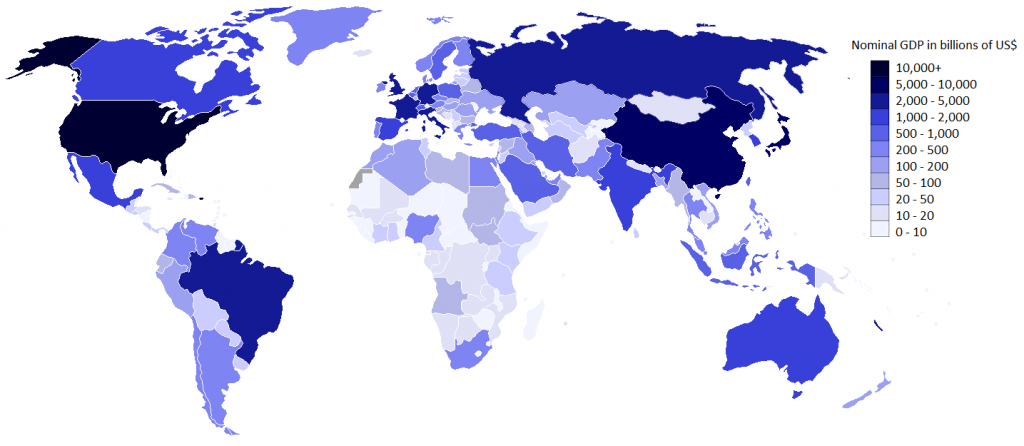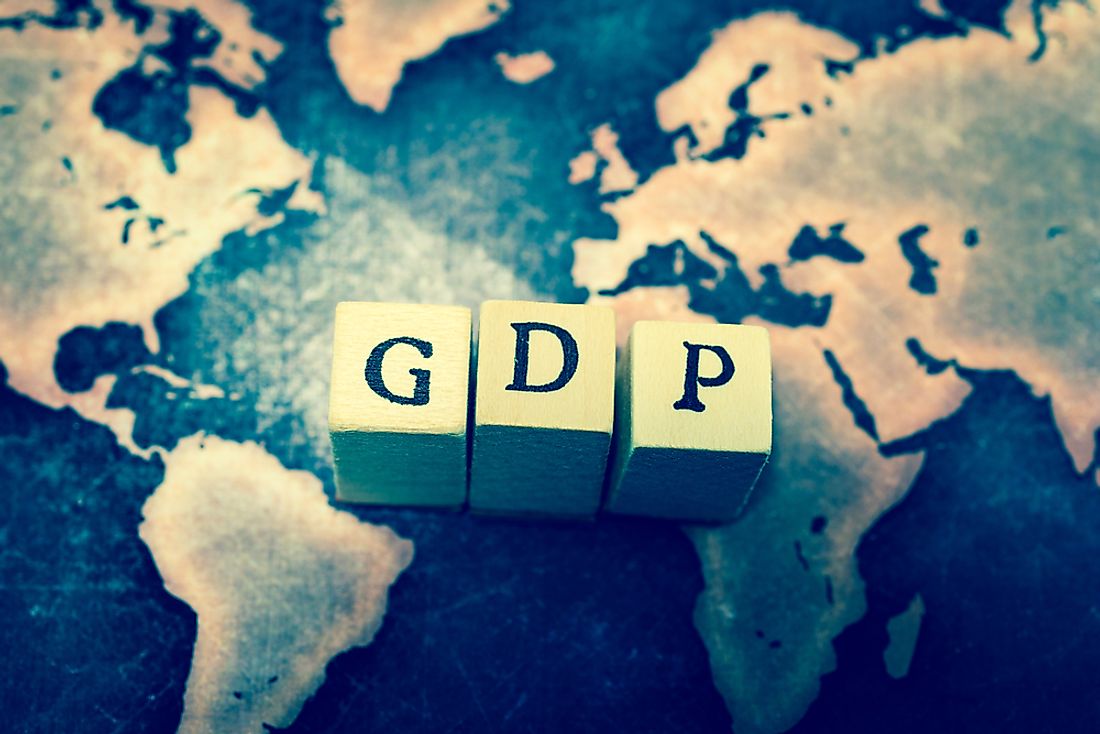Gross domestic product (GDP) is an economic indicator that reflects the monetary value of all final goods and services produced by a territory in a certain period of time. It is used to measure the wealth that a country generates. It is also known as gross domestic product (GDP).
GDP measures the total production of goods and services in a country, so its calculation is quite complex. We have to know all the final goods and services that the country has produced and add them together. That is, from the production of apples, milk, books, vehicles, machines and all the goods that have been produced in the country to the services of a taxi, a dentist, a lawyer, a bank or a teacher, among many others.
There are some data that are not included in the calculation of GDP, simply because they cannot be accounted for or known. For example, self - consumption goods or the so-called underground economy .
The result of all this measures the size of a country's economy, that is, all its economic wealth. The higher the GDP of a country, the greater its economic capacity and therefore, the greater its capacity to generate employment and investment.
GDP is usually calculated on a quarterly basis. Although the GDP data that is usually used to measure the size of an economy is the annual GDP, that is, everything produced in that territory during a year.
How do we know if a country's GDP is growing?
It is said that a country grows economically when the rate of change of GDP increases, that is, the GDP of the calculated year is greater than that of the previous year. The formula used to see the percentage of variation is:
GDP variation rate = [(GDP year 1 / GDP year 0) - 1] x 100 =%
In short, if the rate of change is greater than 0, there is economic growth. Otherwise, below zero, there is economic decline.
The rate of change in GDP is usually calculated every quarter. When there are at least two negative quarters in a row, it is said that there is an economic recession .
What happens if GDP increases or decreases?
When the GDP of a country increases, it is a good sign for the economy and affects practically everyone in the territory. And on the contrary, when it falls it is a bad sign. We could liken it to the income of a family or a company; if income increases it is usually a good sign. On the other hand, if the income is reduced it is a bad sign of the economy.
When GDP rises, it means that consumption, spending and investment in the territory are generally increasing. As we will see below, these are precisely the factors that measure GDP, along with exports and imports.
When spending, consumption and investment increase (that is, when GDP increases), a positive effect is usually triggered on the economy, since these increases increase the income of companies, families and administrations, which they will have more capital to invest and create jobs. Which again makes consumption and spending grow (as there are more people with the ability to consume). That is why when GDP rises, employment tends to grow and workers' wages rise. The first relationship (GDP and unemployment) is reflected in Okun's law .
On the other hand, when GDP decreases, or there is an economic recession , consumption and company profits decrease in aggregate, thus reducing employment and investment.
That is why it is such an important indicator and so followed by investors and journalists.
How is gross domestic product (GDP) calculated?
Next we will see how to calculate GDP . This can be measured through three methodologies:
1. Expenditure method
It is the sum of residents' spending on final goods and services over a period of time. Then GDP = final consumption + gross capital formation + exports - imports. The most used way to calculate the GDP of a country is according to its aggregate demand :
GDP = C + I + G + X - M
Being:
- C: Consumption
- I: Investment
- G: Public spending
- X: Exports
- M: Imports
2. Value added method
It is the sum of the added value (gross) that is generated in the production of goods and services in a country in a certain period of time. In this case, the formula for gross domestic product is:GDP = GVA + taxes - subsidies
Where GVA refers to gross value added.
For example, if a bakery sells bread, the added value of a loaf will be its price minus what it cost to make the loaf (flour, electricity, etc.)
3. Income method
It is equivalent to the sum of the income earned by the owners of the productive factors (labor and capital) during a period of time. In this case, GDP = compensation of employees + taxes - subsidies + operating surplus. Thus, the formula for gross domestic product is:GDP = RA + EBE + taxes - subsidies
Where:
- RA: Compensation of employees, that is, the sum of all wages received by citizens in a territory.
- EBE: Gross operating surplus.
GDP comparisons
When we compare the gross domestic product of a quarter with the previous quarter, we obtain the quarter-on-quarter rate of change, that is, the economic growth that the country is experiencing from quarter to quarter.If we compare the GDP of a quarter with the same quarter of the previous year, we obtain the annual rate.
When comparing the GDP of countries internationally, the annual GDP data, measured in United States dollars, is usually used.
In this map you can see the concentration of GDP according to countries:

Criticisms of gross domestic product (GDP)
One of the problems for which GDP is criticized is because it does not measure the distribution of wealth within a country or the difference between countries. But for that there are other indicators such as:
- Gini index
- Human development Index
- GDP per capita
Luke is passionate about fostering student involvement and connection. He studied psychology for his major and likes learning about the past. Luke aims to specialize in artificial intelligence and cybersecurity. .
Leave a reply
Your email address will not be published. Required fields are marked *Recent post

Gross Domestic Product (GDP): What is it, definition and concept

Empirical Knowledge: What is it, definition and concept

Tertiary Sector or Services: What is it, definition and concept

Raw Material: What it is, definition and concept
